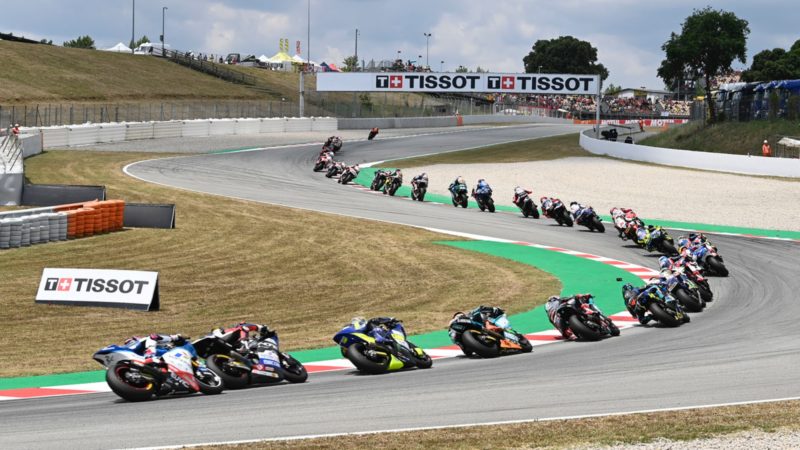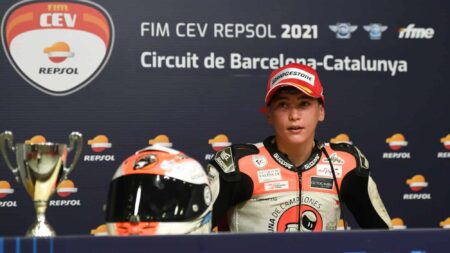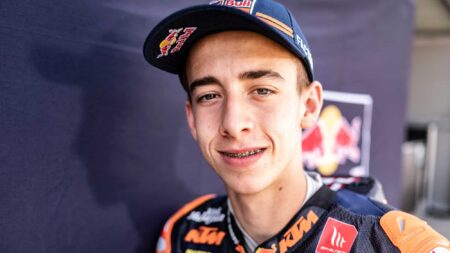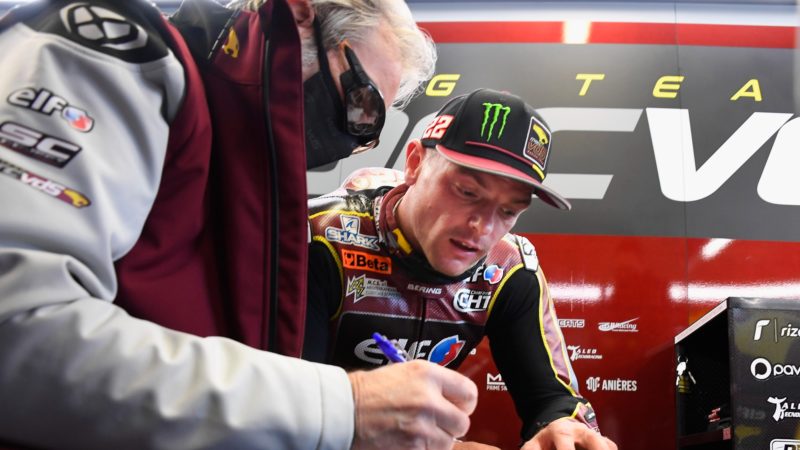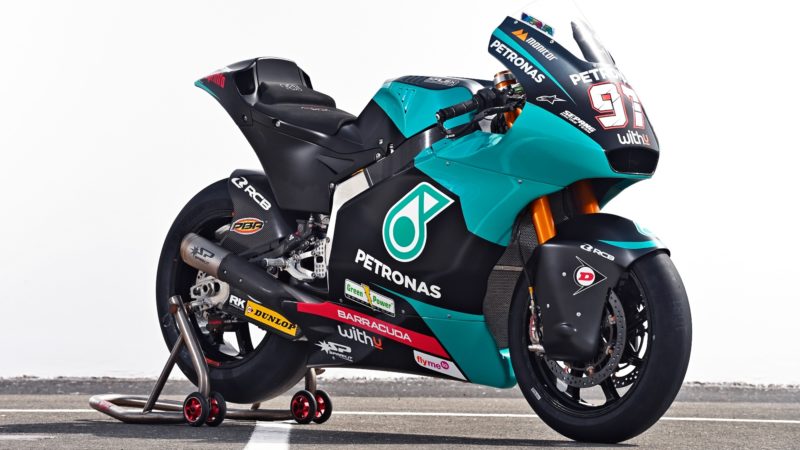“At two of the last three races my first laps were terrible, so I was 13th or 14th, then it’s hard to make headway from there. You may come forward a little bit but it’s really difficult to close a one-second gap on someone in the middle of the race. It’s a different way of riding – it’s a bit like a time trial – you’re out there just putting in the laps and if you make one little mistake it takes three laps to recover.
“Mentally it’s a tough class because the guy pulling away from you is probably on the exact same bike. Standing in front of a mirror is the hardest place to be in Moto2, because that’s where you have to start.”
Dunlop has been Moto2’s sole tyre supplier since the category’s inaugural season in 2010. Over the past three seasons the class has switched to larger tyres based on the tyres Dunlop use in the EWC (Endurance World Championship) which runs 1000cc road bikes. The larger rear slick arrived in 2019 and the larger front last year.
“The tyres are basically EWC tyres, so they have a hard carcass and they can be strange because Moto2 chassis are stiffer than road-bike chassis and the way we ride in Moto2 stresses the tyres more,” Lowes continues. “When the tyre allocation is quite stiff you can put in a new front tyre and you’re actually slower for the first few laps. Since they changed to the bigger front you don’t have so much feedback
“When the allocation is softer I find it easier. But when you’re struggling during the weekend with harder tyres you have a crash and you lose confidence, so it’s very difficult.”
This explains why some riders can be so much quicker during the first laps and build a winning gap while their rivals struggle to get up to speed.
Is it possible that Moto2 bikes are more difficult to ride than MotoGP bikes? Not really, but in some ways, yes.
Two of the main reasons MotoGP is so close is that all the riders can take the Michelin front to the limit entering corners and then rely on traction control to get them out of the corners. Moto2 bikes don’t feature traction control.
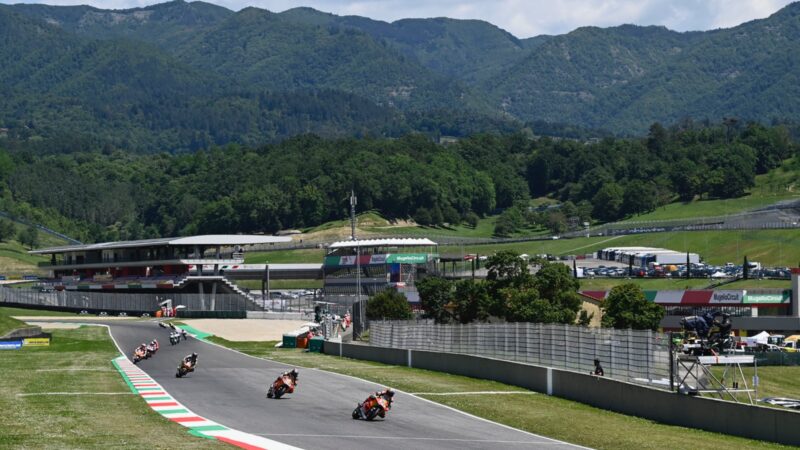
A few laps into the Mugello Moto2 race and the pack is already spreading out
Triumph
“Moto2 would be closer in the first few laps with TC, because it allows you to hit that limit straight away,” adds Lowes. “When I was in MotoGP [Lowes had a torrid rookie MotoGP season in 2017, riding Aprilia’s below-par RS-GP] I really enjoyed Sachsenring because through all those long, fast lefts you just rode into the electronics.
“In Moto2, because of the heat generated in the left of the tyres through all those lefts, we have really hard rubber on the left, so it’s difficult. You can only use 11% or 12% throttle through those long lefts, so it’s complicated because you can’t push to be fast. I’m not saying Moto2 is harder than MotoGP, but it’s difficult to take the maximum performance from the tyres from lights out.”
Moto2’s Magneti Marelli ECU includes maps for TC and anti-wheelie, but these aren’t enabled, because Dorna and Triumph want the rider, not the bike, to be Moto2’s prime performance factor.
The Moto2 ECU does include five or six maps for torque demand – Lowes uses the maximum map everywhere, wet or dry – and 20 maps for engine-breaking control, with most riders using the middle five or six.
There’s another factor that makes Moto2 bikes tricky – they are mongrel machines, grand prix chassis with road-bike engines – because he main concern of Dorna and IRTA when they created Moto2 was reducing costs.
